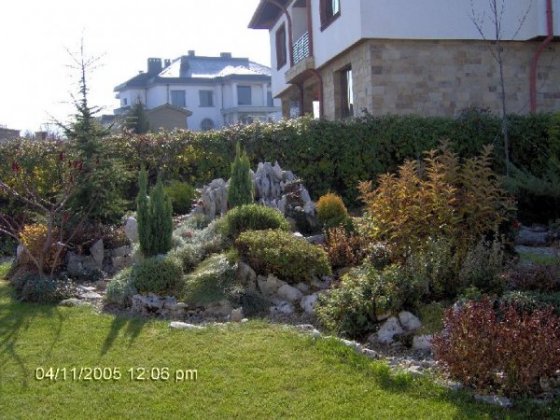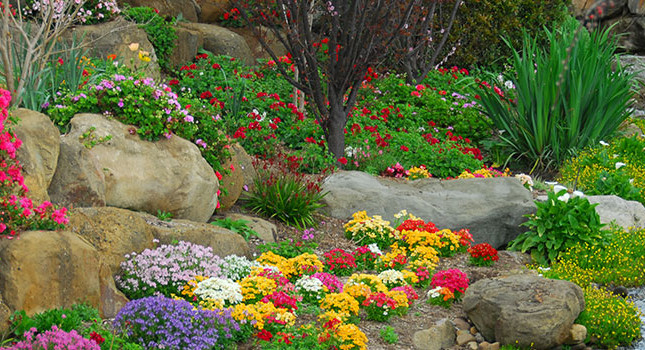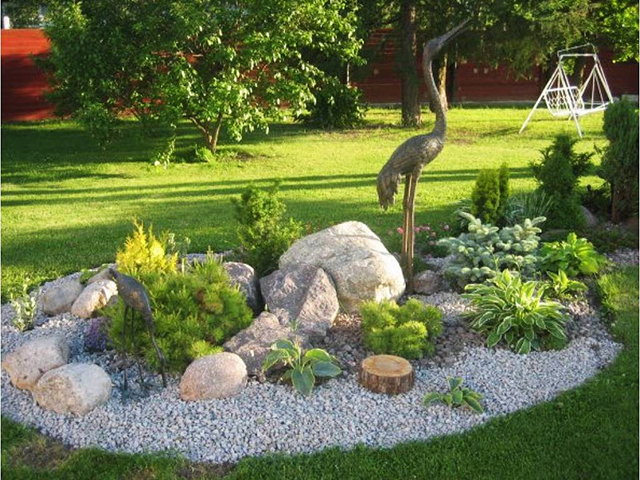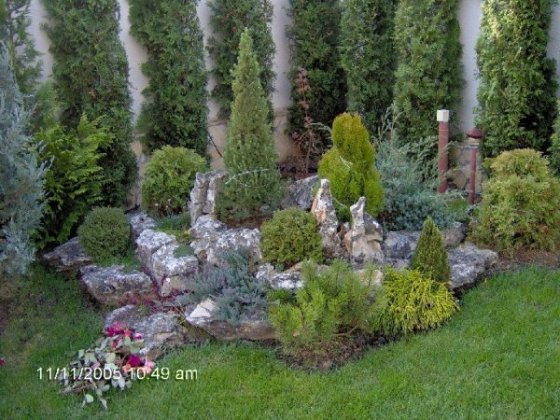Alpine Rock Gardens – Create a Miniature World of Plants

Landscapes that incorporate plants with rocks and stones take extra thought — and muscle — to create. At their best, rock gardens offer a nurturing microclimate for plants among artfully placed stones. They can be a beautiful solution to landscaping problems such as eroding slopes, areas that are difficult to mow, and awkward grade changes. But you can make these types of landscapes even better by learning how to add plants into rock gardens.
A rock garden should look like a slice of a natural, rocky landscape.
- Alpine rock gardens resemble a windswept mountain peak complete with rugged, lichen-coated rocks and boulders, flowering alpine plants, and twisted evergreens stunted by harsh growing conditions.
- Woodland rock gardens made of mossy rocks and boulders demand ground-hugging wildflowers such as trilliums, violets, and ferns.
- Desert rock gardens feature cacti and other succulents as well as desert annuals such as California poppies.


Finding the Perfect Location and Materials
If you want to add plants to a rock garden with an open, north- or east-facing slope, look for alpine varieites; woodland and desert plants are less choosy. Or, you can create a mound or hill from a fast-draining soil mix. Flat ground can work, too, as long as the soil drains well, but it is less visually interesting, and the plants may be more difficult to see.
The most important visual element in a rock garden is the rocks. They should look natural. You can achieve a natural look by following two rules: Choose rocks all of the same type and position them so they look as if they were arranged by nature’s hand, not yours. Use the largest rocks you or several people can handle for the most natural look. You might even wish to consider hiring a professional landscaper who can move boulders and large rocks with a small forklift or backhoe.
Porous rocks, such as limestone, sandstone, shale, and tufa, work best for alpine plants, because they absorb water, keeping the roots cool and moist. Choose nonporous rocks such as marble, basalt, and granite for desert rock gardens. Woodland rock gardens do well with either rock type, depending upon other growing conditions.


How to Position Rocks
Position the largest rocks first to create the rock garden’s structure, then add more rocks for balance. Partially bury the rocks so that at least a third of each rock is underground, so they look like a natural outcropping; don’t place them directly on top of the soil. Tilt flat rocks slightly backward so they funnel water back into the soil. Align stratified rocks in the same plane, so they project from the side of a hill or out of flat ground as if they were exposed by erosion. Group rounded rocks in a flat area at the base of a slope to imitate a boulder field left behind by an ancient glacier.
If you’re going to add plants to rock gardens, you need to know that most are sensitive to poor drainage and perish in any soil that is not fast-draining, although this does not necessarily mean they prefer dry soil. They do best in moist but well-drained soil with a low to moderate nutrient content, and will rot in rich or damp soil. Amend all but gravelly soil before installing the rocks to make it more fast-draining, then fill in around the rocks with a soil mix made from one-third coarse sand, fine gravel, or stone chips; one-third peat or composted leaves; and one-third loamy soil.


Select the Right Plants for Rock Gardens
True alpine plants are native to mountainous regions above the tree line and are adapted to harsh growing conditions. They form neat buns and mats of foliage and grow slowly, often producing gorgeous flowers. Alpine plants may be fussy about their growing conditions. But many other dwarf and low-growing plants that you choose to add to rock gardens provide the look of an alpine meadow without making difficult demands on the gardener (see next page). Once you have mastered them, you can move on to growing more esoteric specialty plants.
Be sure to choose add plants to a rock garden that are in scale with the size of both your landscape and the stones in it. Plant a small rock garden with fine-textured small plants and very dwarf conifers. A large-scale garden can accommodate larger dwarf conifers. Arrange plants naturally so they spill down the hillside and nestle around the rocks. In nature, alpine plants grow right next to a rock, enjoying extra water from runoff and a bit of shade from the rock’s small shadow. Position your plants accordingly, planting the root ball directly at the base of a rock.
Dwarf conifers add dimension and year-round greenery to a rock garden, where they imitate the contorted specimens found on windswept mountain peaks. Choose columnar, rounded, and spreading shapes to add interest to the garden, but position them artfully to avoid the look of a collection.
Apply a mulch of fine gravel or pebbles to keep the crowns of water-sensitive rock garden plants dry. The gravel top dressing also keeps dirt from splashing on the tiny plants and discourages weeds, which can quickly overrun these slow-growers. The top dressing also gives that final, natural-looking touch to the rock garden.



Comments are closed.